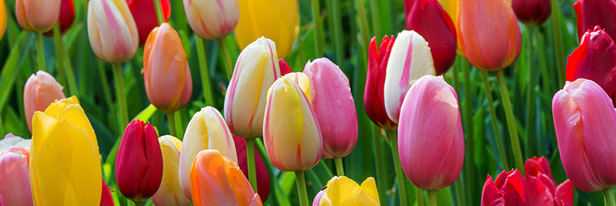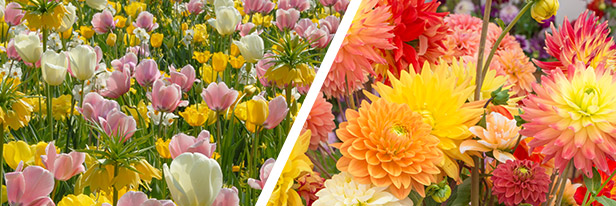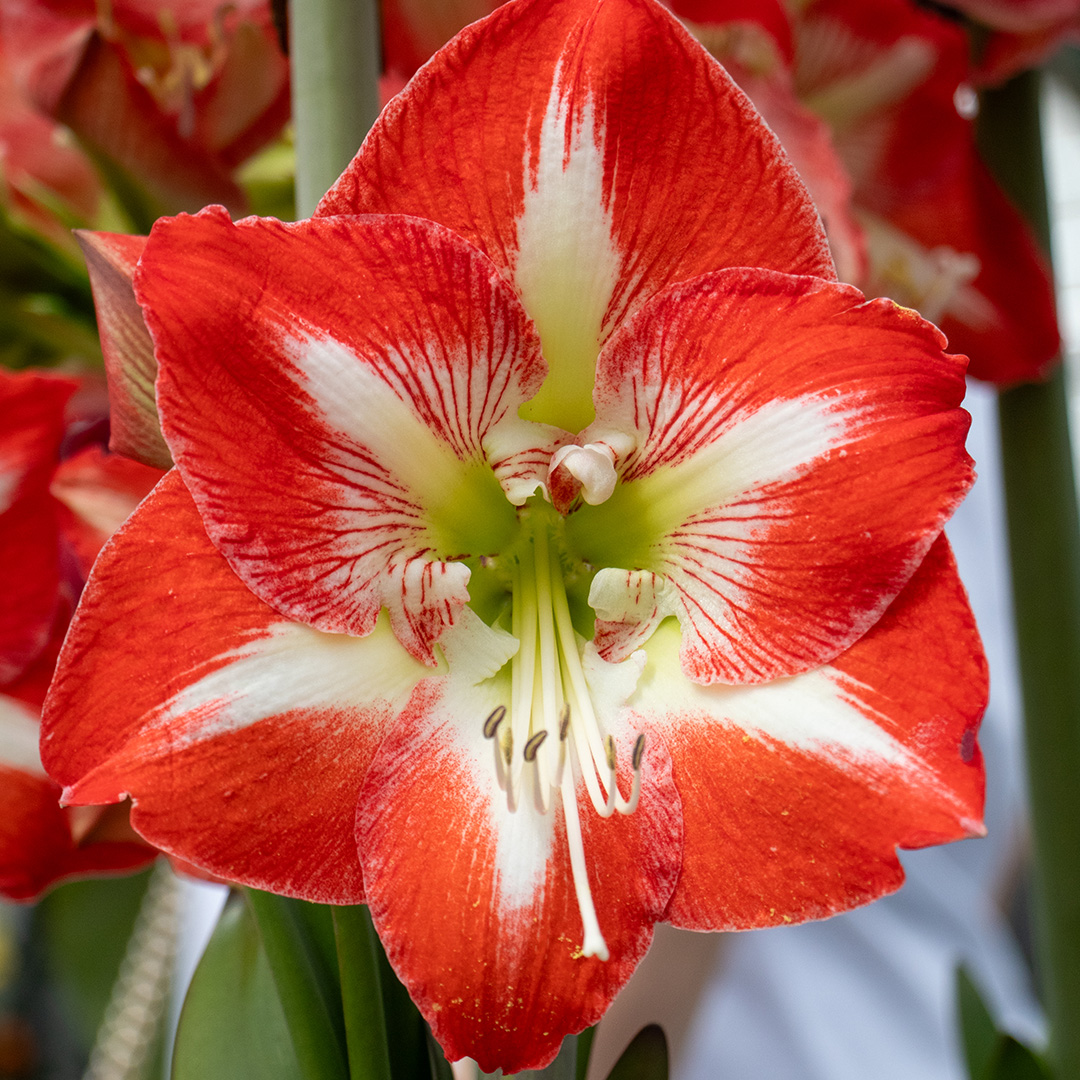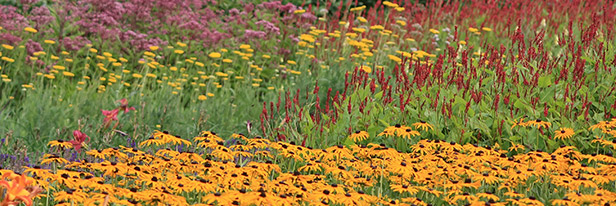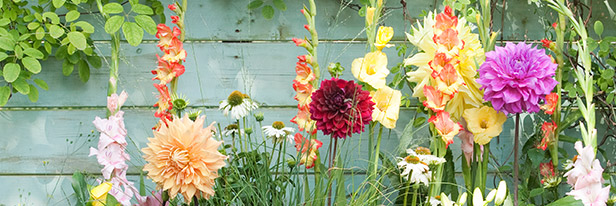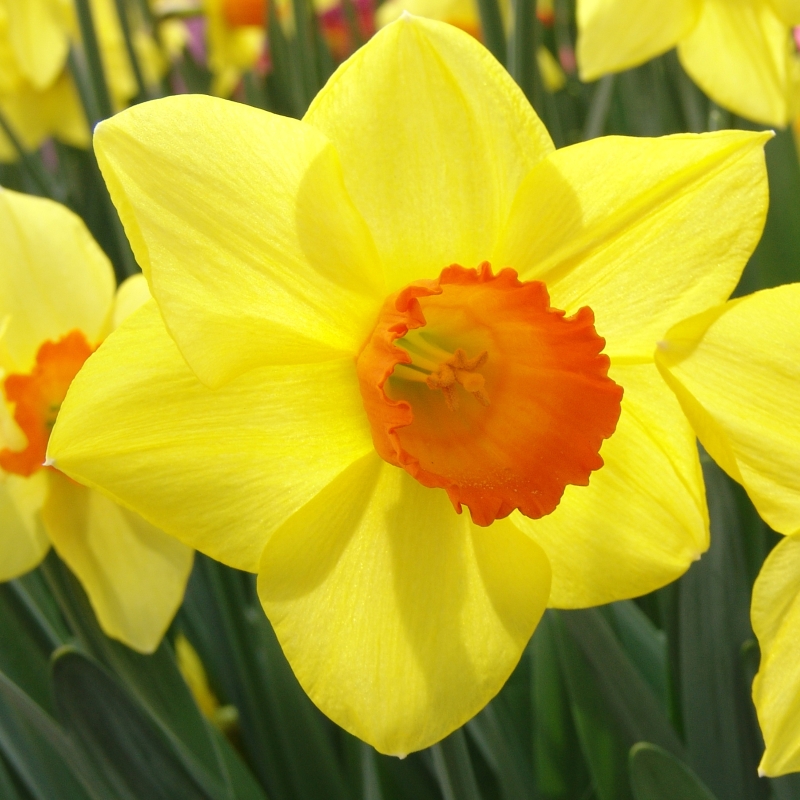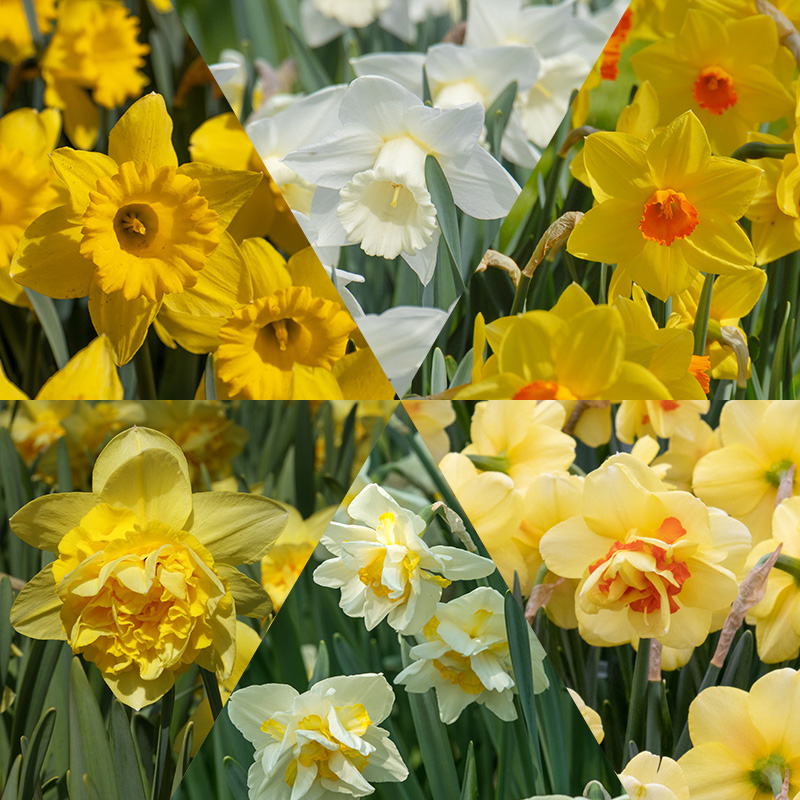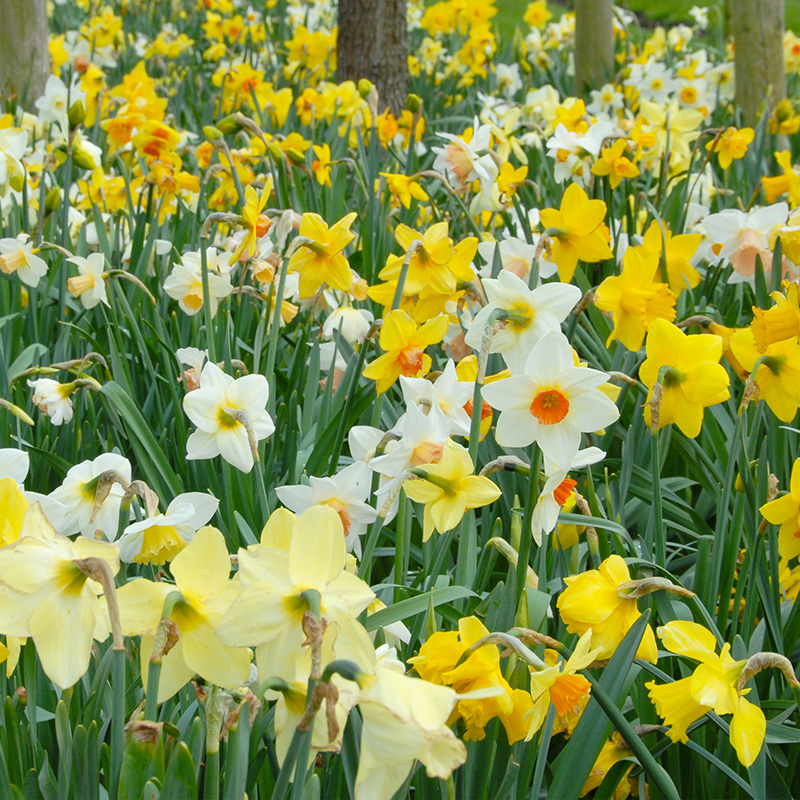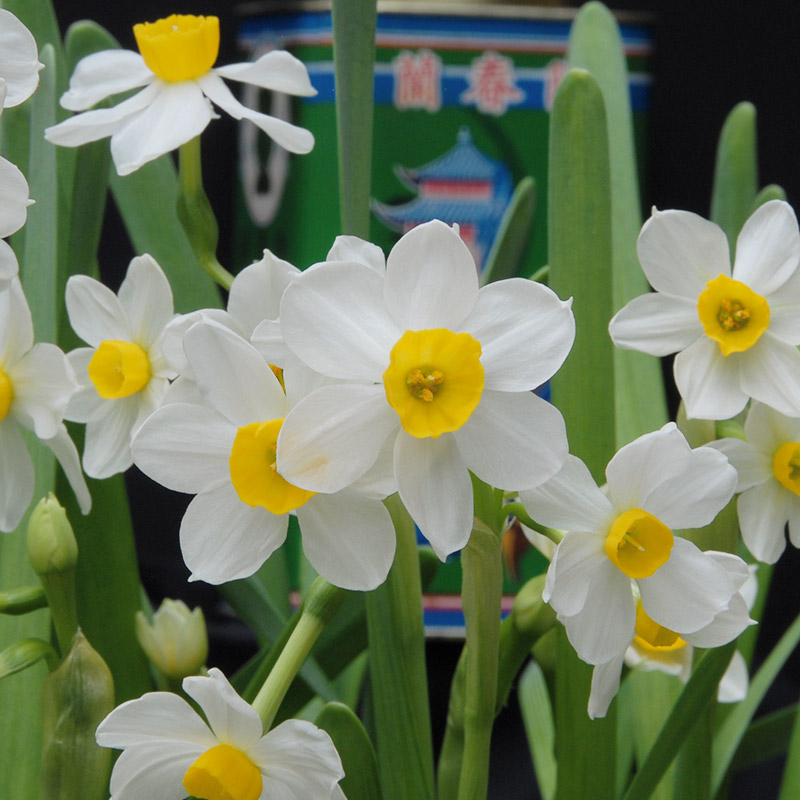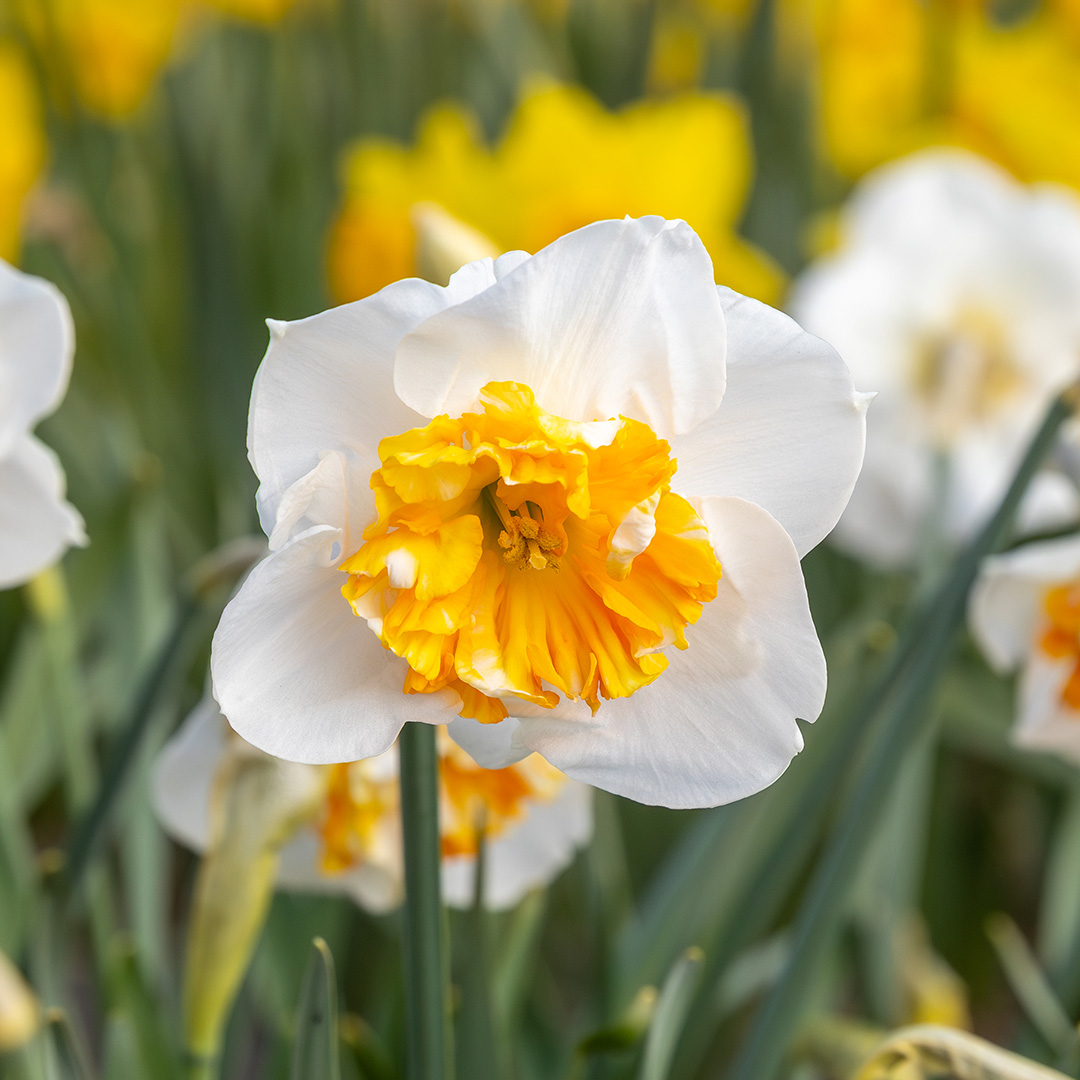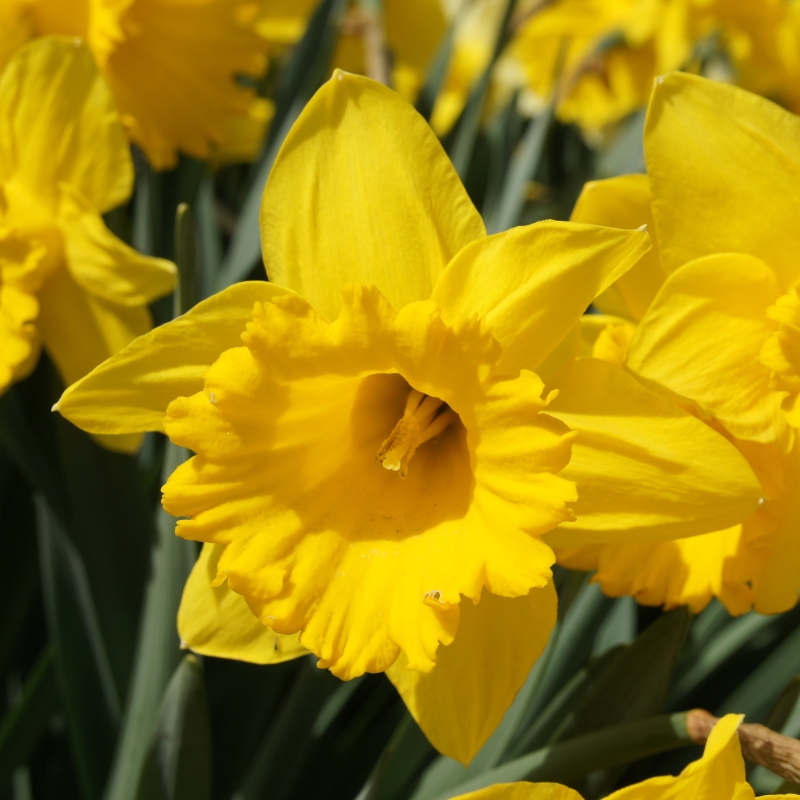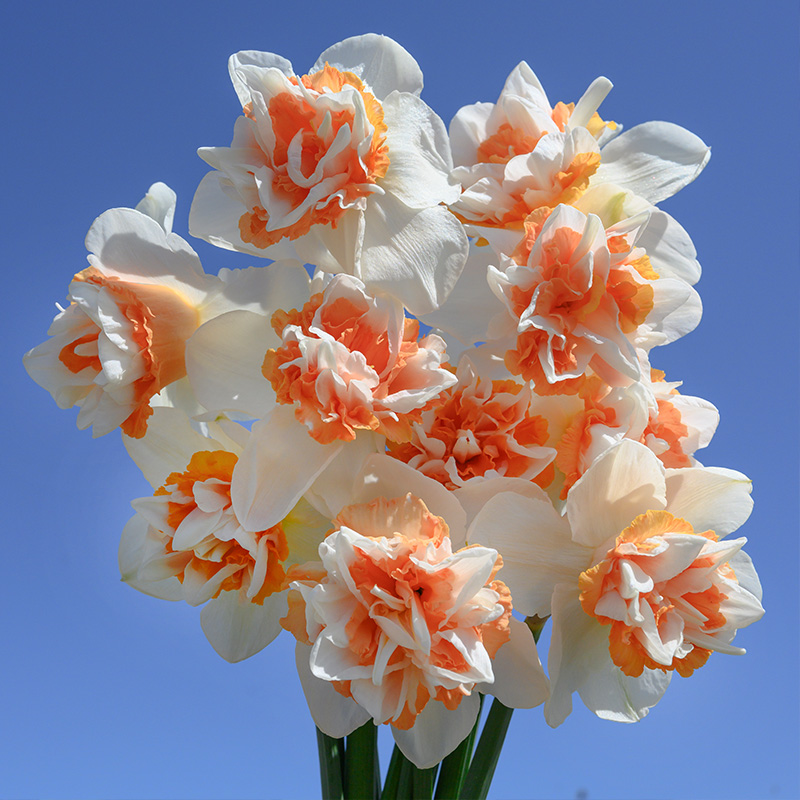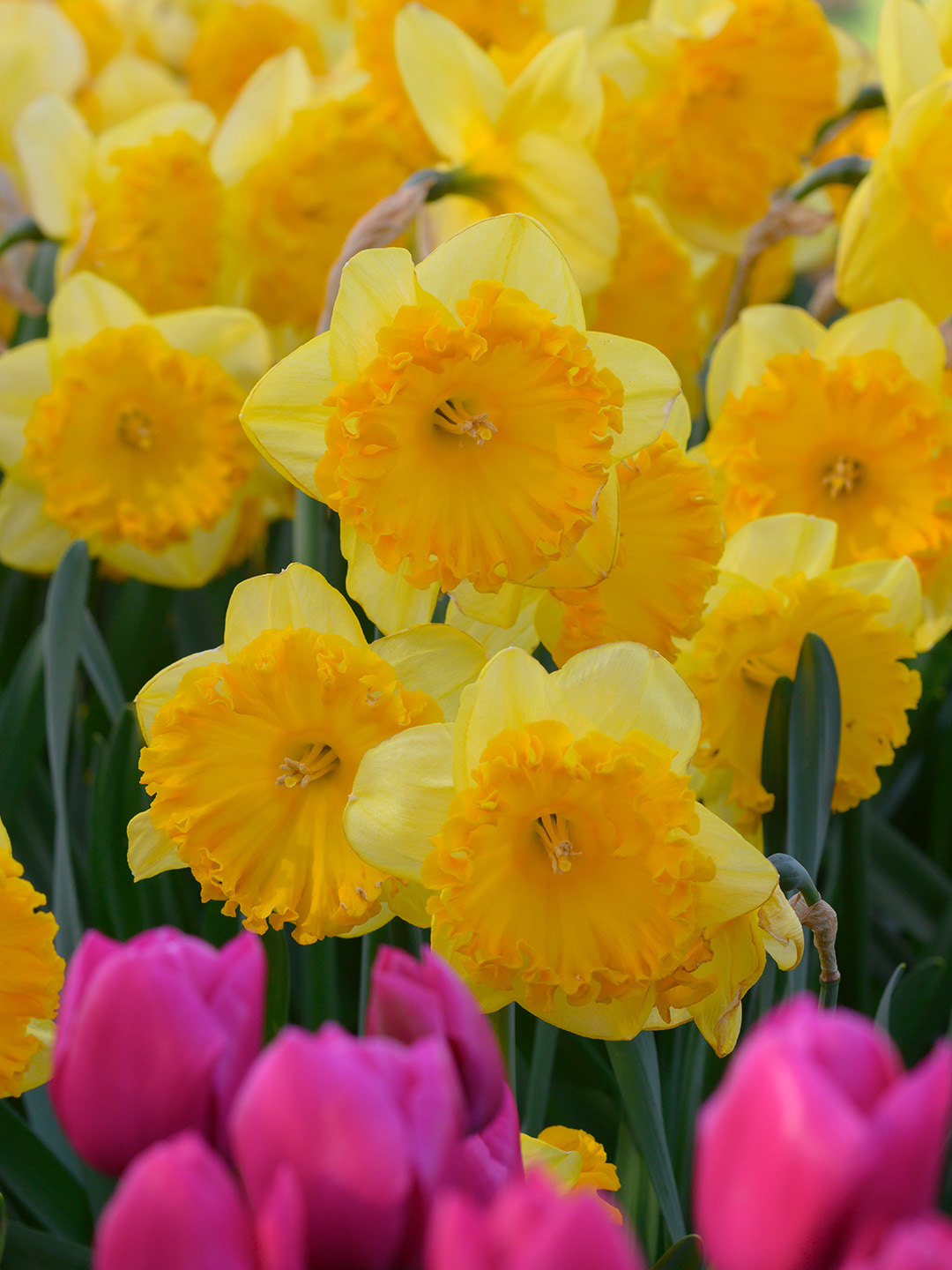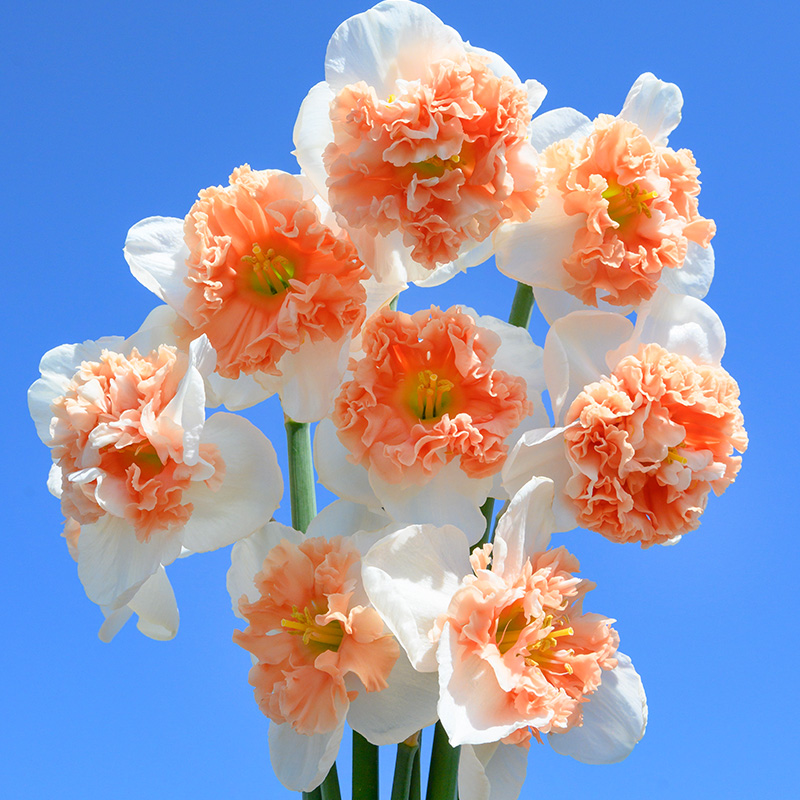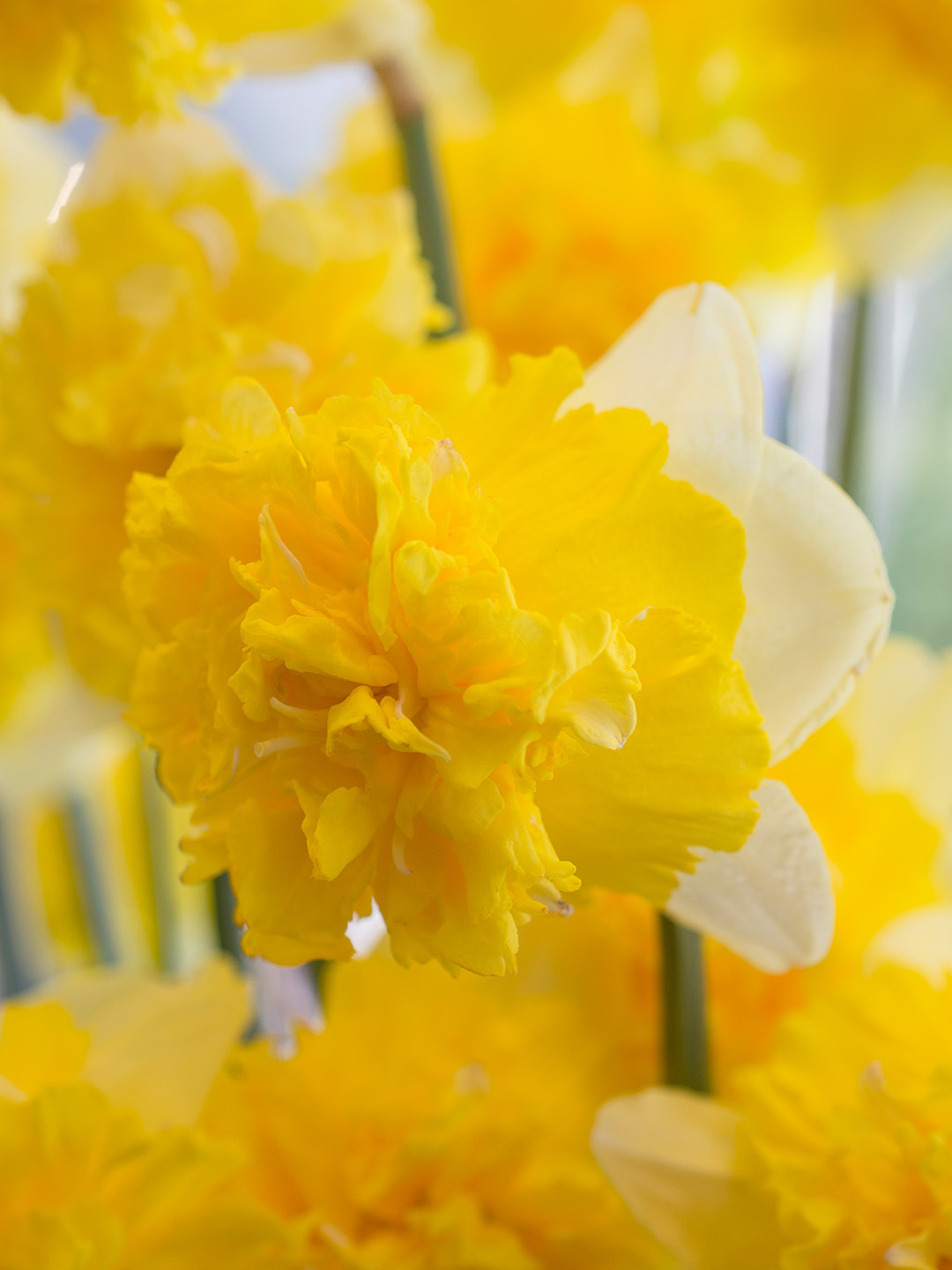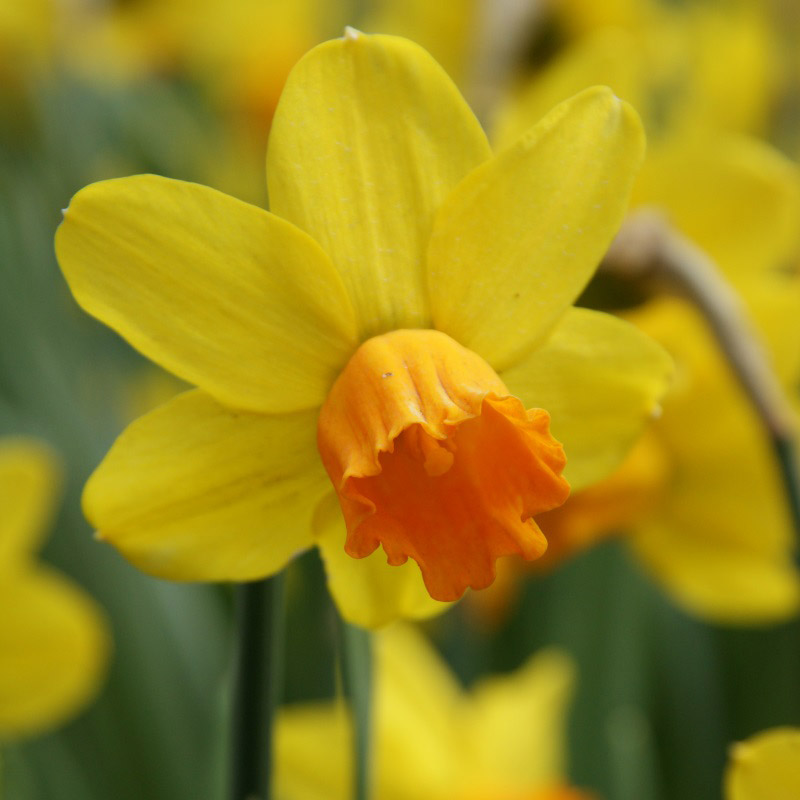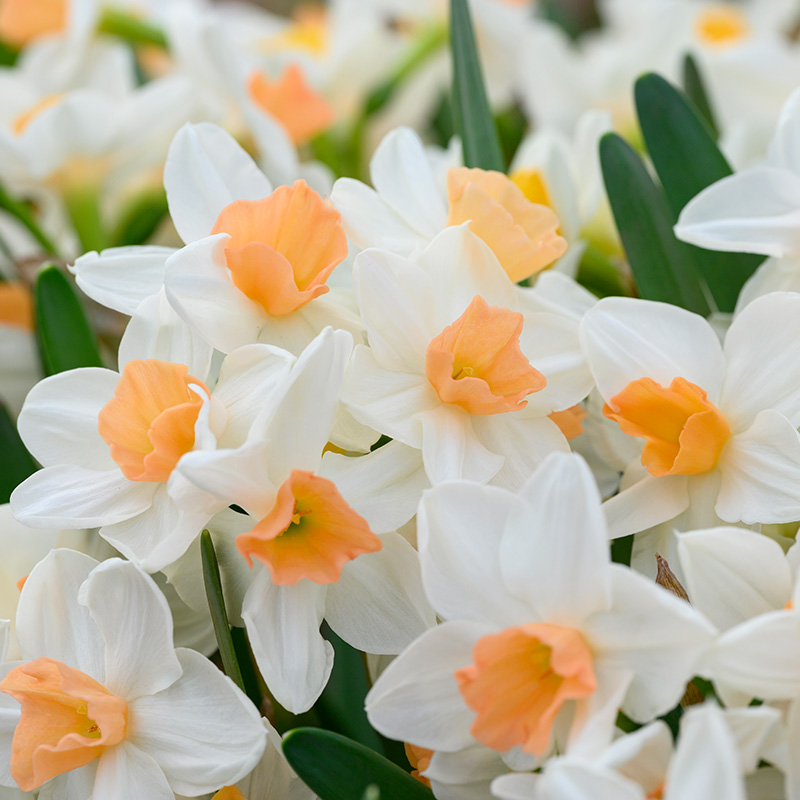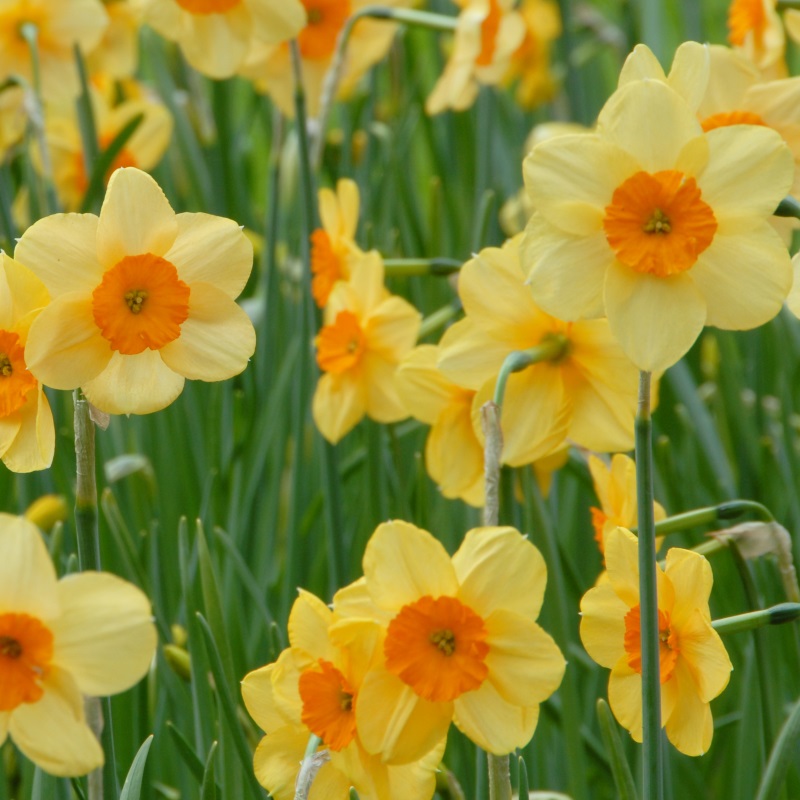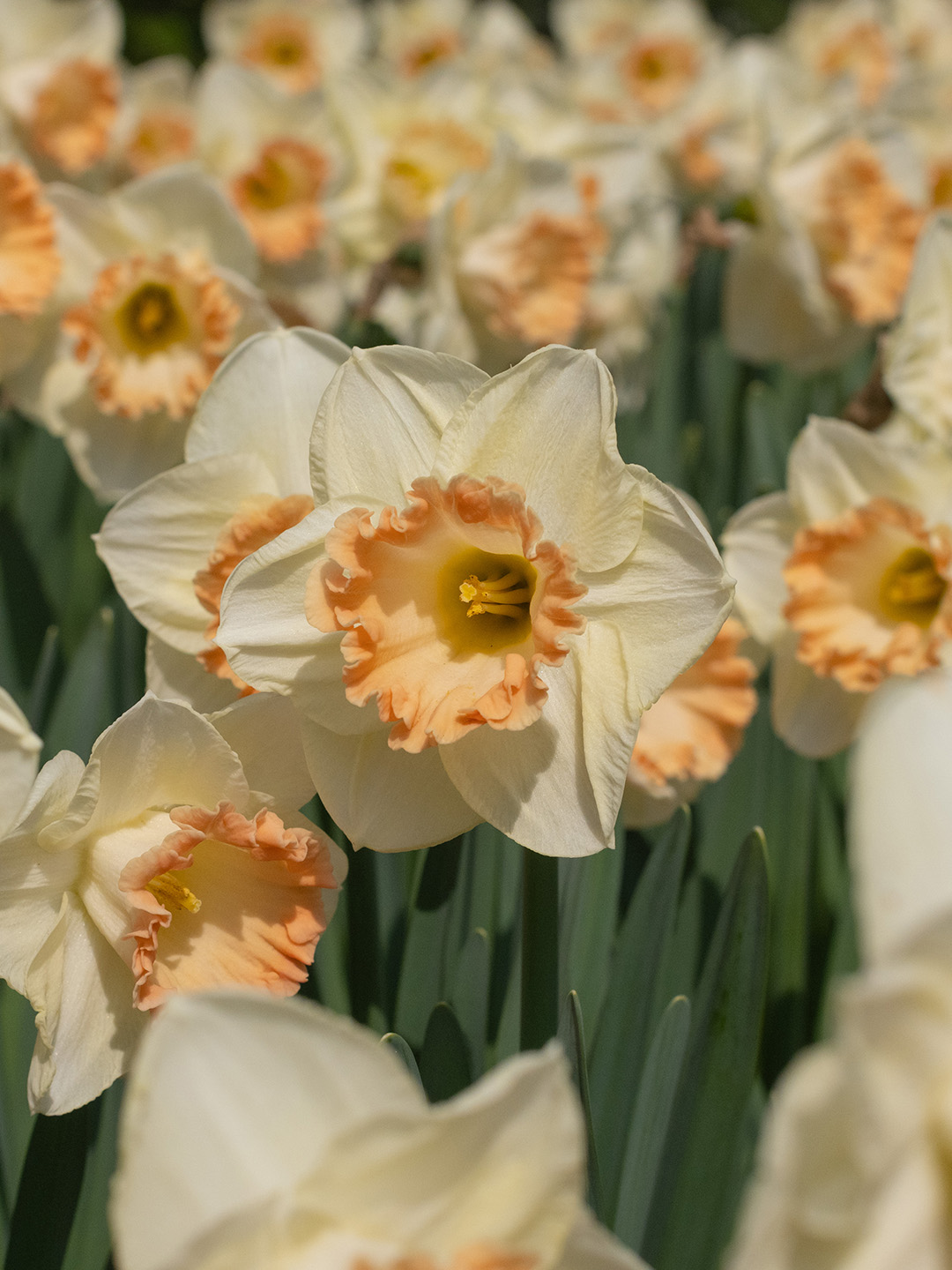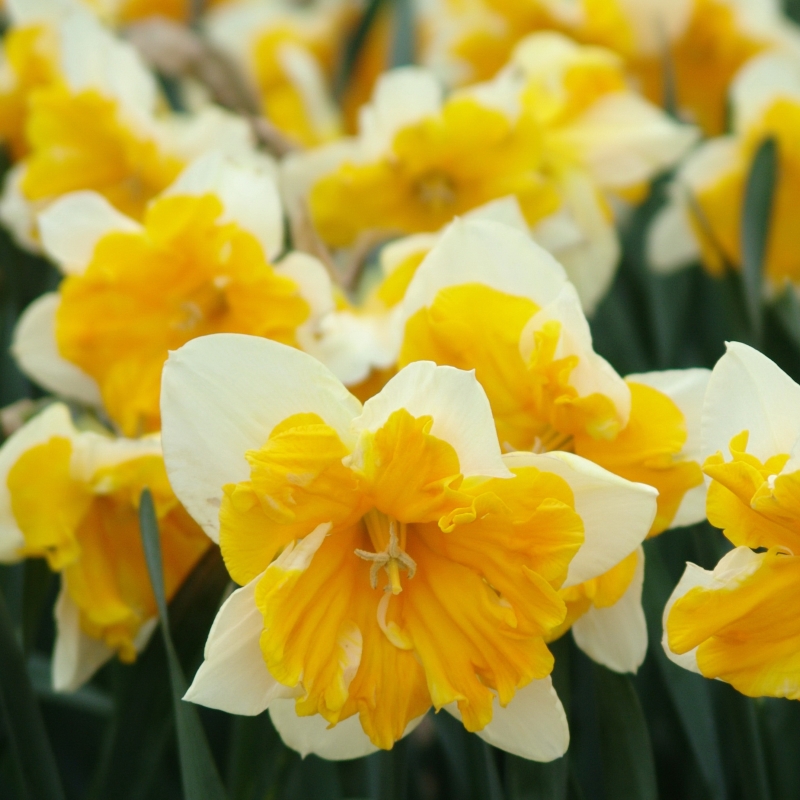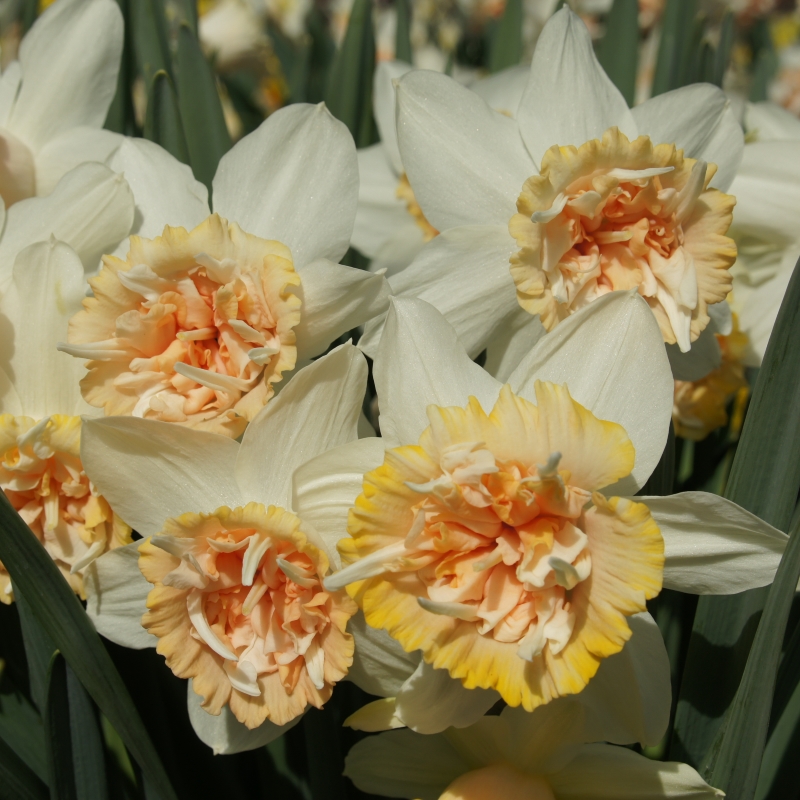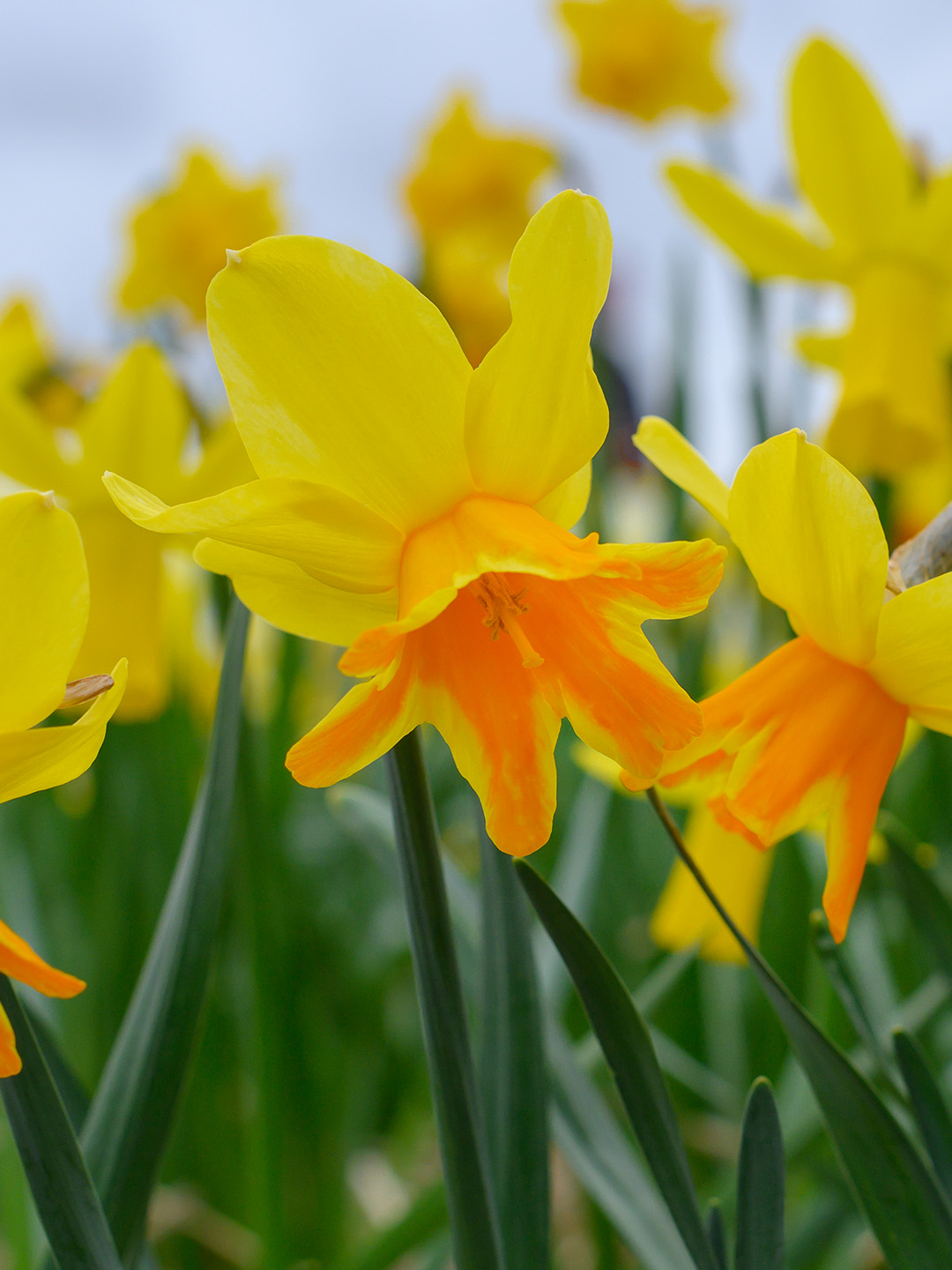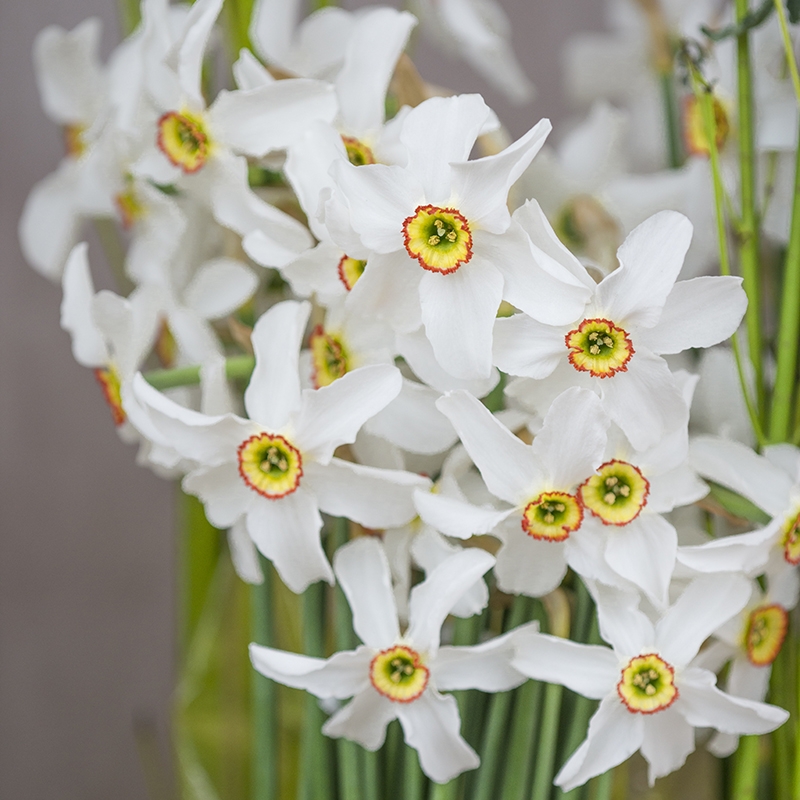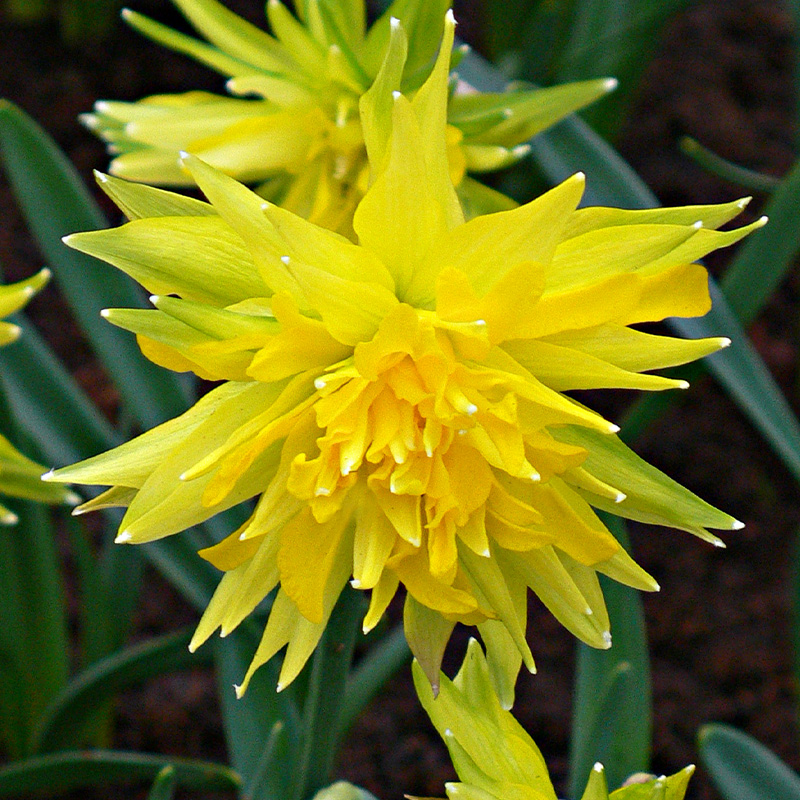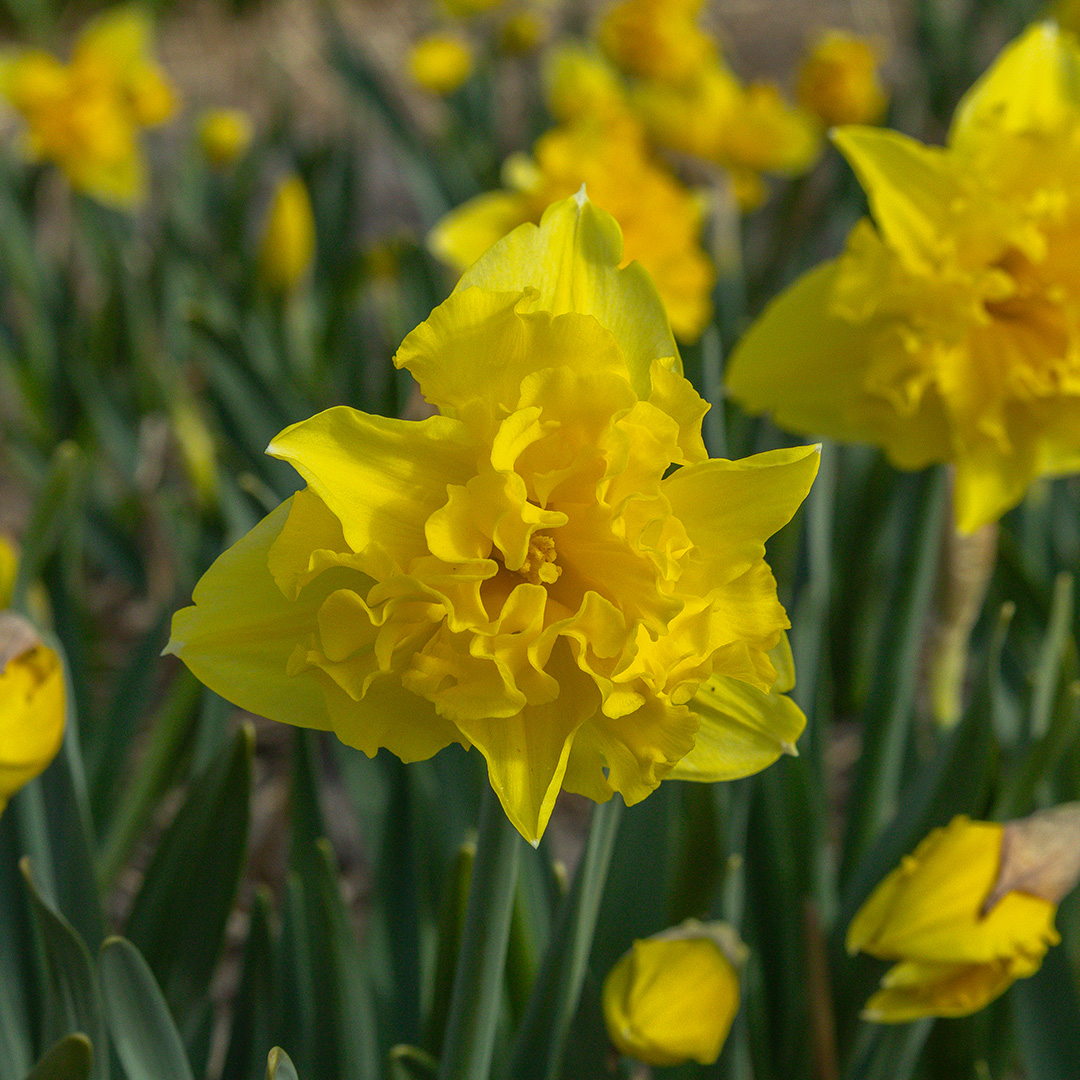
Planting Daffodil Bulbs
Daffodils herald the colorful spring as one of the first messengers of spring. With their bright flowers, they brighten even dark spring days. When should you plant daffodils and what happens to daffodils after flowering? We'll tell you!
The best time to plant daffodils?
Although daffodils bloom in the spring, you need to think about planting in time, because the bulbs need the frost of winter to form beautiful yellow or white flowers in the spring. Daffodil bulbs are planted in the fall, before the first frost. This is advisable, because in this way the bulbs of daffodils still have enough time before the first frost to take your first roots. The soil temperature for planting is best already below 48 °F but not below 32°F. If you put the daffodil bulbs too early in the fall - when it still rains a lot - then it may be that the many rains will rot the bulbs. Usually the perfect time to plant is from September to December, or even January if there is no frost yet. Cover the daffodils with some leaves or straw to protect them from light frost.
When does the daffodil blooming season begin?
The flowering time of daffodils differs according to the variety of plants. There are early-flowering daffodils, which herald the arrival of spring with their flowers as early as February and March. Late-flowering daffodils, can also form their first flowers only in May. Would you like to enjoy a sea of blooms from daffodils in the garden for as long as possible? TIP: Then plant a combination of early- and late-flowering bulbs. This way you can enjoy new daffodils for month.
Daffodil bulbs: where to plant?
The best location to plant a daffodil is in the sun or in a semi-shaded location. Most varieties grow best there, and nothing will stand in the way of the bulbs blooming next year. The soil should be as rich in nutrients as possible and not too moist. If the soil is very moist - for example, due to waterlogging - then it could happen that the young bulb molds and rots.
Planting daffodil bulbs correctly
Once you have found a nice, sunny spot in the garden for your daffodils, you can start planting! As a rule of thumb, daffodil bulbs should be planted twice as deep as they are tall. Small daffodil bulbs should be placed in a planting hole about 4-4.7 inch deep. If you buy bulbs from us, then you can find all the information about the planting process on the respective product page. Probably the best known daffodil Tête à Tête, for example, should also be planted about 4-4.7 inch deep in the ground and have about the same planting distance from the next bulb.
Before planting, it is important to loosen the soil. The bulb should now be placed in the soil with the tip facing up. Then loosely cover the daffodil bulb with soil again. Do not press the soil tightly! If the soil is pressed too tightly, then not enough oxygen will reach the bulb and the young plant would have trouble making its way through the hard soil. After planting, you should water the soil properly. This will allow the daffodil bulbs to grow roots faster.
Planting daffodils in a pot
You can also plant daffodils great in a pot or tub. This way you can make windowsills, balconies or house entrances shine. As in the flower bed, you should plant daffodils in pots in the fall. You can simply leave the pot outside over the winter. If you want to store it indoors, then the location should be dark and cool (about 39°F), for example in the cellar. The pot should be sufficiently large (at least 2 inch deep). It is important to water the daffodil bulbs sufficiently, but do not allow waterlogging in the planter, because then there is a risk that the bulb plants will rot. Make sure there are holes in the bottom of the pot so that excess moisture can drain away. Planting tip: You'll get an especially great result if you plant daffodils in groups and combine daffodils from different blooming times and height groups. To do this, apply the lasagna planting technique (see image below).
Daffodils faded - what now?
Have you ever noticed that in the spring you can see bright daffodils everywhere in parks, forests or roadsides? This is because daffodils are suitable for wilding. This means that the bulbs come back every year and even form daughter bulbs underground after flowering. Thus, daffodils not only come back every year but even multiply.
As with other wildflowers, cutting daffodils after flowering is not necessary. Once the daffodil has faded, you should leave the leaves until they have wilted. After that, you can simply pluck them off. This is because the wilted leaves provide valuable nutrients to the bulb, which it needs to overwinter. Daffodil bulbs that have already been in the ground for a year are usually stronger the following year and usually start growing and flowering a week earlier than freshly planted bulbs.
Combining daffodils with other early bloomers
For a great garden bed, it's best to combine spring flowers from different groups together. For example, daffodils (Narcissus) look great together with crocuses (Crocus), snowdrops (Galanthus) or tulips. This way, you can declare war on the gray winter days as early as February.
If you don't have the time or inspiration to put together your own combination, why not use one of the bulb mixes put together by our experts? For example, we have a pure daffodil mix or the flower bulb mix "Everlasting Spring", which will delight you with the flowers of ever different bulbs throughout the spring thanks to your composition and different flowering times.

